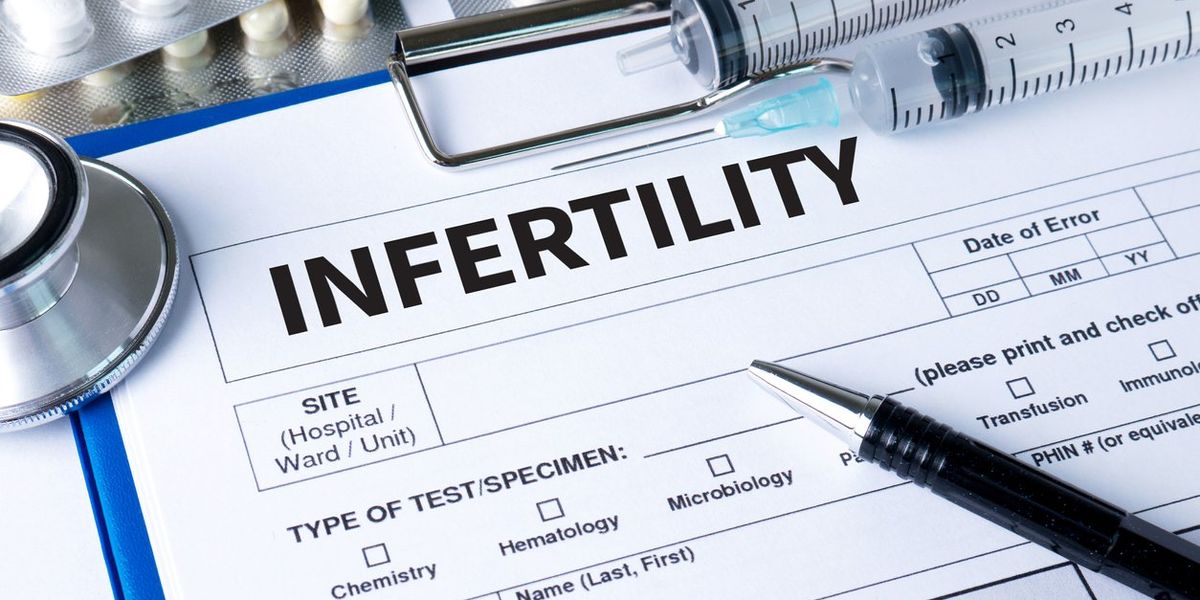
[adinserter block=”3″]
Medically reviewed by Rashmi Kudesia, M.D., M.Sc.
April 23-29, 2023, isNational Infertility Awareness Week.
For Monica Wunderman, the road to parenthood hasn’t been easy. Wunderman has always wanted to have children, but when she struggled to get pregnant she wasn’t sure what to do. Wunderman has two uteruses — which unfortunately does not mean she’s more likely to carry a child — and other health conditions have contributed to her infertility. But thanks to advancements in fertility treatment options, Wunderman and her husband are now planning to have a baby through a gestational surrogate. “Not only was it difficult for me to get pregnant, it could have been dangerous as well,” Wunderman said.
Wunderman’s story is more common than you might think. About 1 in 5 women are diagnosed with infertility every year. Another 1 in 4 either have had difficulty getting pregnant or have been unable to carry a pregnancy to term.
“The incidence of infertility has not necessarily increased, but the need for fertility services has,” said Cindy Duke, M.D., Ph.D., FACOG, founder and medical and laboratory director of the Nevada Fertility Institute in Las Vegas.
What is fertility treatment?
If you’ve been trying to conceive for longer than a year, there are a number of tests your healthcare provider (HCP) may recommend:
- Ovulation testing – helps determine the time in your cycle when you’re most likely to get pregnant
- Hysterosalpingography – an X-ray procedure to see if the fallopian tubes are open and to see the inside of your uterus to detect any abnormalities
- Ovarian reserve testing – testing to determine how many eggs you have left
- Hormone testing – testing to determine the levels of hormones that are necessary to become pregnant in your blood
- Pelvic ultrasound or sonohysterogram – medical imaging used to look inside the organs or structures in the pelvis or in the uterus
- Laparoscopy – a minimally invasive surgical procedure to directly look at your pelvic organs
- Genetic testing – testing to evaluate your DNA to see if there are any issues that can increase the risk of miscarriage or pregnancy complications
The cause of infertility, as well as age, overall health and personal preferences can determine the type of treatment your HCP recommends. It’s important to note that many women will need multiple treatments and may need a combination of procedures and medications. The medical options for women dealing with infertility include:
Fertility drugs
Fertility medications are often prescribed for women who have irregular or absent periods to help regulate or induce ovulation. The more common drugs include:
- Clomiphene citrate: An oral medication that stimulates ovulation. It’s usually the first treatment for women who don’t have polycystic ovary syndrome (PCOS).
- Letrozole: An oral medication that works by reducing estrogen levels in order to stimulate ovulation and may be used for women with PCOS.
- Gonadotropins: These medications are used, usually with IVF, to stimulate the ovary to produce multiple eggs or to mature the eggs before they’re released.
- Metformin: Women with PCOS may have insulin resistance, which can be a cause of infertility. Metformin can improve insulin resistance and may improve ovulation.
Fertility surgery
For women with uterine problems, surgery can help remove certain infertility-causing issues such as uterine polyps or noncancerous fibroids.
Intrauterine insemination (IUI)
IUI is a type of reproductive assistance where sperm is placed directly in the uterus around the time of ovulation. The procedure is quick — it takes about a minute — but there’s some preparation required, including keeping track of ovulation. Women with certain health conditions such as endometriosis and infertility with no known cause may be candidates for IUI.
Reproductive assistance
The main types of reproductive assistance are assisted reproductive technology (ART) and in vitro fertilization (IVF).
ART treatment options include egg or sperm donation. This is when eggs, sperm or embryos from someone other than the intended parent(s) are needed to have a child. Some people may choose this option because of medical issues. LGBTQ couples and single people may also choose this treatment.
In IVF treatment, mature eggs are retrieved and then fertilized with sperm in a laboratory. Once fertilized, the embryos are transferred into the uterus.
Assisted hatching is a procedure often used with IVF. Once an embryo has been created through IVF, it’s surrounded by a hard outer layer of cells. Assisted hatching creates a small crack in the outer layer to increase the chances of the embryo implanting in the uterus. Women who have previously been unable to conceive through IVF may want to consider assisted hatching.
The cost of infertility treatment options
Fertility treatments are not cheap. A single IVF cycle, for example, which includes ovarian stimulation, egg retrieval and embryo transfer, can range from $15,000 to $30,000 and many women may need up to six cycles to get pregnant. Insurance does not always cover the costs, but 20 states have passed fertility insurance coverage laws.
“Always ask your insurance carrier if it covers fertility services, not just OB-GYN services,” Duke advised.
The risks of fertility treatments
Fertility treatment options offer hope, but they may also come with certain risks, including the increased possibility of becoming pregnant with more than one baby at a time, premature birth, low birth weight and birth defects. Risks to the mother may include bleeding and infection from surgical procedures and ovarian hyperstimulation syndrome (OHSS), which can cause ovarian pain, bloating and nausea.
How to find a fertility specialist
“When looking for a fertility clinic or specialist, first make sure they are trained, certified and licensed,” Duke said. “Then ask yourself, ‘What do I need as a patient?’” That might include anything from language assistance to mobility accessibility to gender, racial and ethnic inclusivity. “Read reviews, look at the provider’s website to see what kind of language and photos they use, ask about live birth rates — not just success of getting pregnant — and never be afraid to ask for a second opinion,” Duke said.
The impact of infertility
After five rounds of successful IVF egg retrieval, Wunderman remains optimistic that she and her husband will achieve their dream of becoming parents. She also acknowledged that it has been a difficult journey — physically, financially and emotionally.
“If you don’t talk about the issue, it can be terribly isolating,” Wunderman said, offering advice for other women dealing with infertility. “Science is evolving and there are amazing resources out there. Don’t be ashamed — infertility is more common than you think — be an advocate for yourself, find a healthcare provider and clinic that has your back and is invested in your success during this process. Consider any and all options and then make the right decision for yourself.”
From Your Site Articles
Related Articles Around the Web
[adinserter block=”3″]
Credit : Source Post






